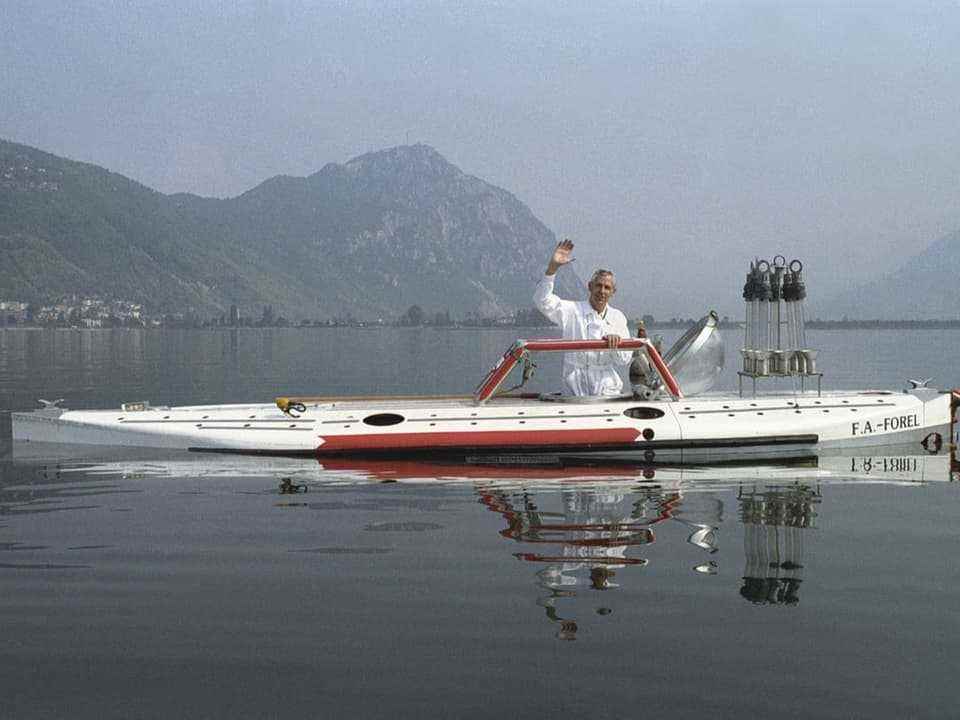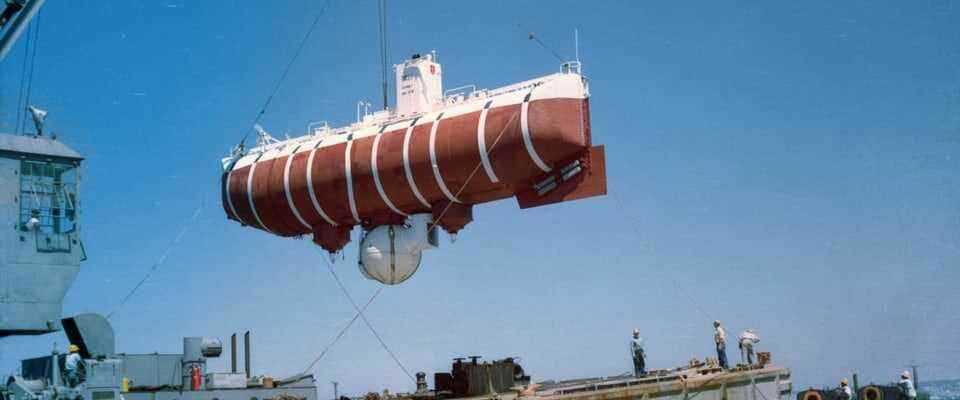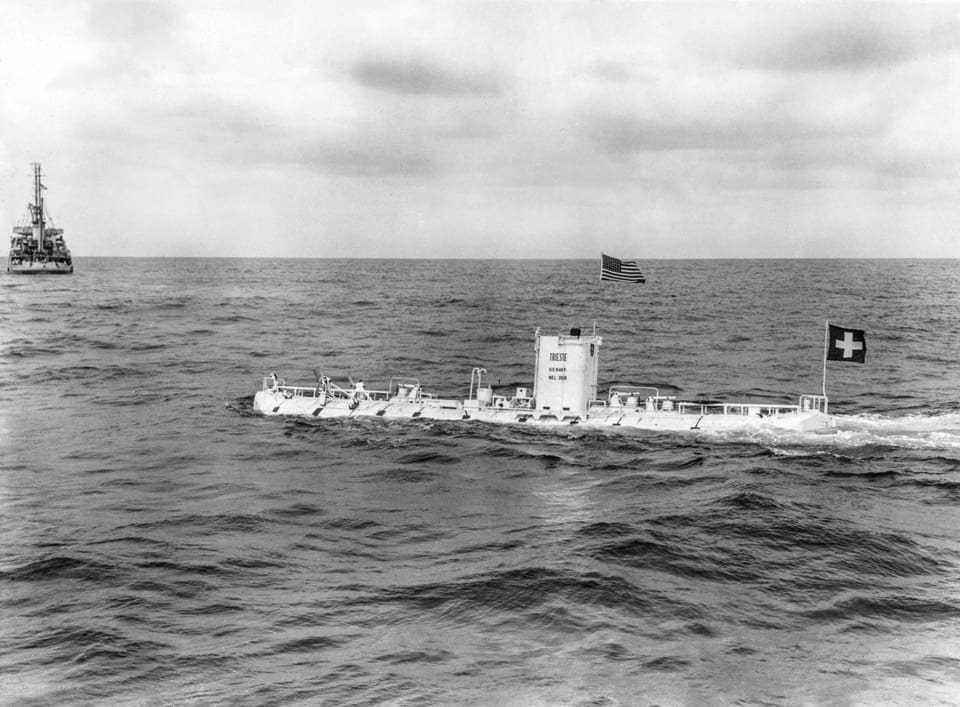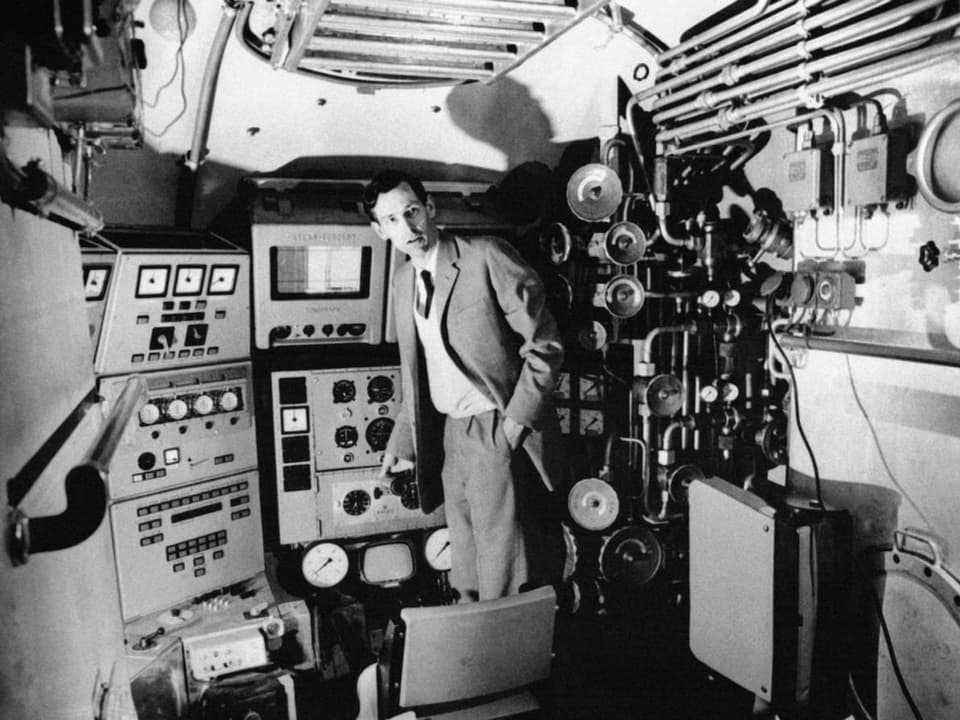contents
The Swiss oceanographer was a pioneer in deep-sea research and became involved early on in the fight against environmental pollution.
It is not without a certain irony that it was a Swiss person who was the first to reach the deepest point of the sea. On January 23, 1960, Jacques Piccard dived in a self-built submarine to the bottom of the Mariana Trench in the Pacific Ocean at a depth of 10,916 meters.
His descriptions show that such tours were not without problems. During a dive in the Mediterranean Sea, the researcher told Radio Beromünster in 1953 that they dived down very quickly, about one meter per second: “So we sank deep into the seabed. The mud reached up to the windows.” The dive from 1960 had to be ended prematurely because of cracks in the window.
The deep sea is alive
For his pioneering work, Piccard received a medal of honor from then US President Dwight Eisenhower. However, one observation on the bottom of the sea was more important to the oceanographer than this award: he had seen a fish there.
If there were animals at that depth, it meant there was a current bringing oxygen down there, too. But then this current could also carry away other things, such as radioactive waste, which at that time was often dumped into the sea. This realization further strengthened his commitment to the environment.
An interview from 1963 shows that the Swiss was not primarily concerned with records, but with science. At that time he announced that he wanted to dive to the bottom of Lake Geneva. There are also a lot of interesting things to see at shallower depths, he explained.
On the occasion of Expo 64, Piccard also made deep insights possible for ordinary people. He built the first submarine for tourists, which transported more than 30,000 people below the surface of Lake Geneva. He later used the submarine for research purposes.
Gifted family of researchers
Piccard’s enthusiasm for research was no accident. His father Auguste Piccard was already a pioneer in aviation and marine research. He succeeded in getting his son, who actually studied history and economics, interested in the deep sea.
Another pioneering achievement by Jacques Piccard was the exploration of the Gulf Stream on the east coast of the USA. In 1969, he and six other researchers floated in a submarine in the Gulf Stream for a month. He was able to collect a lot of knowledge about the underwater flora and fauna.
Ahead of its time
In 1972 he was therefore invited as a special adviser to the first UN environment conference. An interview from 1973 shows how far ahead of his time Piccard was at the time: “You have to systematically focus on clean energies, not just in Switzerland, but worldwide,” he explained. The cleanest form of energy is solar energy.

Legend:
Even in old age, Jacques Piccard continued his research expeditions. Here he poses on September 17, 1989 in his submarine “FA Forel” on Lake Lugano.
Keystone/St
Even then he warned clairvoyantly of the consequences of climate change. “If we continue to use oil and coal as energy suppliers, then that generates a great deal of heat and this then accumulates in the atmosphere,” says Piccard.
The oceanographer spent his twilight years in Switzerland in the canton of Vaud, where he died in 2008 at the age of 86. However, his awareness of environmental protection lives on in his son Betrand Piccard. In 1999, he became the first to circumnavigate the earth non-stop in a hot air balloon. He also founded a foundation to promote solar energy.


